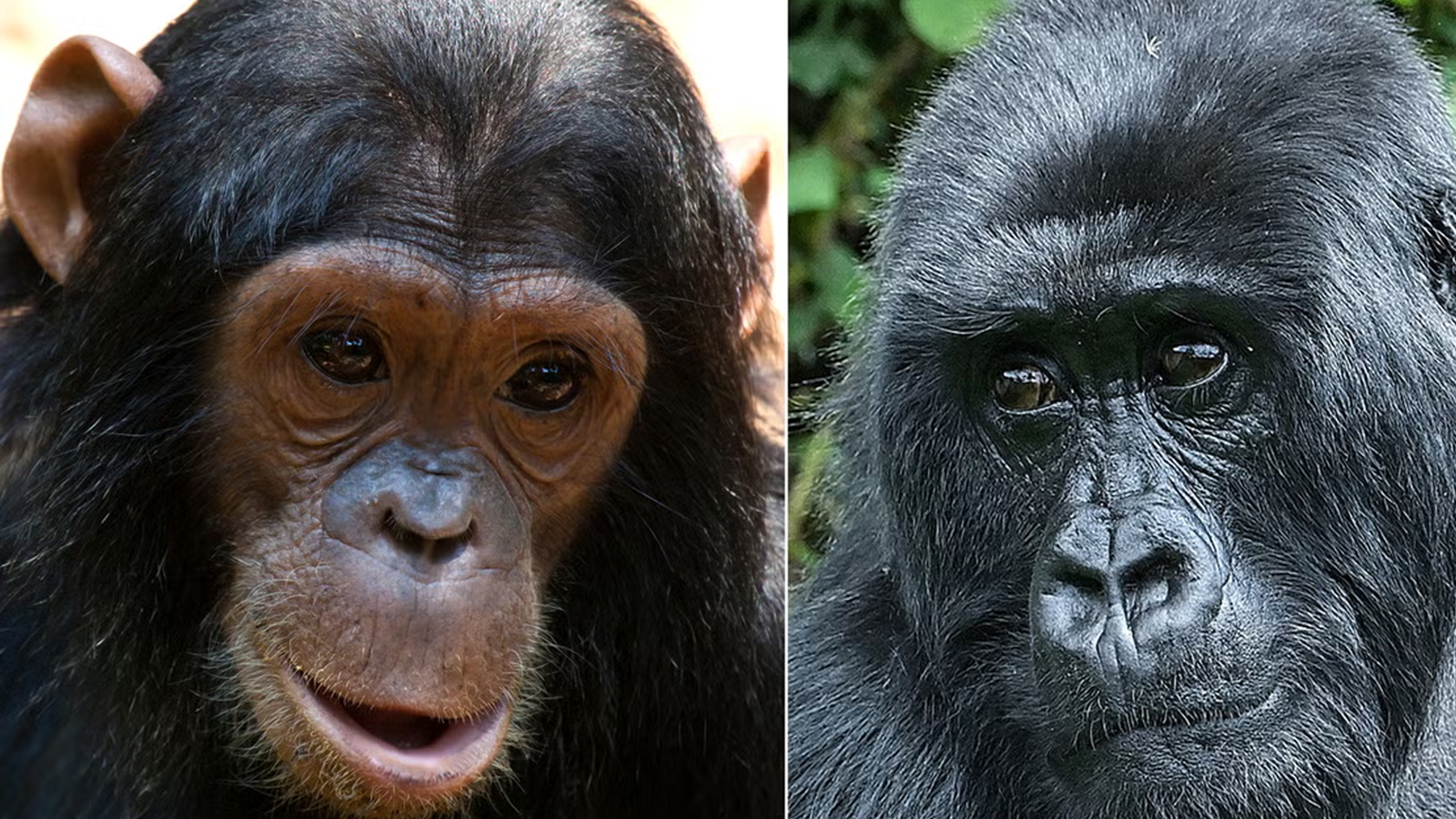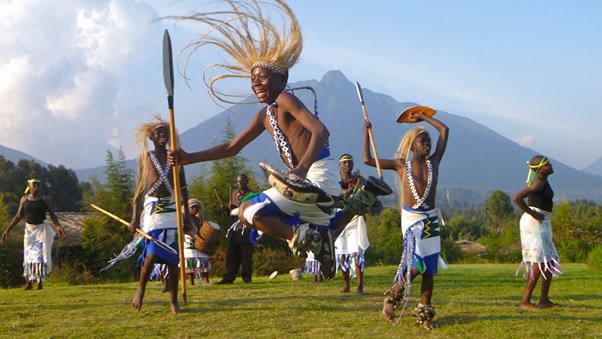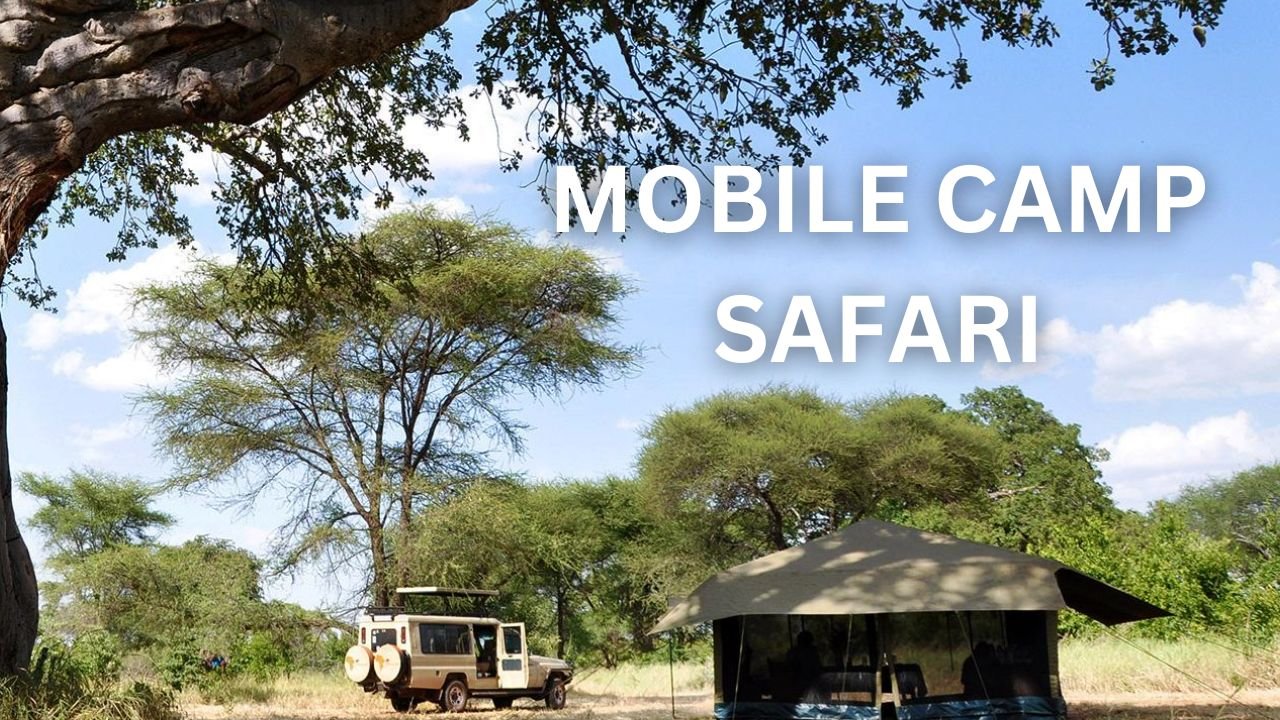The Kazinga Channel Tourists Destination
The Kazinga Channel is a popular tourist destination located in Uganda, East Africa. It is a natural waterway that connects two major lakes in the region, Lake George and Lake Edward.
Here’s some information about the Kazinga Channel and why it attracts tourists:

Location and Community:
The Kazinga Channel is located within Queen Elizabeth National Park in western Uganda. The national park is situated in the districts of Kasese, Kamwenge, Bushenyi, and Rukungiri. The park covers an area of approximately 1,978 square kilometers (764 square miles).
The local communities surrounding the Kazinga Channel and Queen Elizabeth National Park are primarily composed of ethnic groups such as the Bakiga, Banyoro, and Batooro. These communities have a rich cultural heritage and traditional practices that have been preserved over generations.
The communities around the Kazinga Channel often engage in activities such as fishing, agriculture, and livestock rearing. Fishing is particularly important as the channel provides a vital source of livelihood for many local residents. The communities practice both commercial and subsistence fishing, using traditional methods and sometimes modern techniques as well.
Tourism plays a significant role in the local economy, as visitors to Queen Elizabeth National Park and the Kazinga Channel contribute to the region’s revenue and employment opportunities.
Many community-based initiatives have been developed to involve local communities in conservation efforts and provide them with alternative livelihood opportunities, such as eco-tourism initiatives and craft-making enterprises.
Visitors to the Kazinga Channel can often interact with the local communities through cultural tourism programs, village visits, and community-led activities. These interactions allow tourists to learn about the customs, traditions, and daily lives of the local people, promoting cultural exchange and providing economic benefits to the communities.
It’s important for visitors to respect the local customs and traditions, seek permission when interacting with community members, and support local businesses and initiatives. This ensures that tourism benefits both the natural environment and the communities living in and around the Kazinga Channel.
Scenic Beauty:
The scenic beauty of the Kazinga Channel is truly awe-inspiring. Here are some aspects that make it a visually captivating destination:
- Waterway: The channel itself is a beautiful natural waterway that connects two lakes, Lake George and Lake Edward. The calm and serene waters meander through the park, creating a tranquil atmosphere. The channel is lined with lush vegetation, including papyrus swamps and reeds, adding to its scenic charm.
- Landscapes: The Kazinga Channel is surrounded by stunning landscapes that showcase the diverse beauty of Uganda. On one side, you have the vast savannah grasslands extending into the distance, dotted with acacia trees and other vegetation. On the other side, you may see the magnificent Rwenzori Mountains, also known as the “Mountains of the Moon,” which provide a dramatic backdrop.
- Wildlife Encounters: As you cruise along the Kazinga Channel, you’ll have the opportunity to witness a remarkable array of wildlife in their natural habitats. Hippos and elephants can often be seen bathing and drinking at the water’s edge, while buffaloes graze nearby. Crocodiles may sunbathe on the banks, and various antelope species may come to the water to quench their thirst. These wildlife sightings against the backdrop of the channel and surrounding landscapes create a picturesque scene.
- Birdlife: The Kazinga Channel is a haven for bird enthusiasts. Its diverse ecosystem attracts a wide variety of bird species, making it a birdwatcher’s paradise. From waterbirds like African fish eagles, herons, and pelicans to colorful kingfishers, bee-eaters, and weaver birds, there is a constant flurry of avian activity along the channel. The sight of these birds perched on trees or soaring above the water adds to the scenic beauty and offers ample opportunities for photography.
- Sunsets: The Kazinga Channel provides an idyllic setting to witness breathtaking sunsets. As the day comes to a close, the channel takes on a golden hue, and the setting sun casts a warm glow across the landscape. The combination of the tranquil waters, silhouetted wildlife, and vibrant colors in the sky creates a magical and romantic ambiance.
Whether it’s the peaceful waters, the contrasting landscapes, the diverse wildlife, or the vibrant birdlife, the scenic beauty of the Kazinga Channel is a visual treat that captivates visitors and provides a memorable experience in the heart of Uganda’s natural splendor.
Wildlife Viewing:
Wildlife viewing is a major attraction of the Kazinga Channel. Here’s what you can expect when it comes to observing wildlife in this area:
- Hippos: The Kazinga Channel is known for its dense population of hippos. These massive semi-aquatic mammals can be seen lounging in the water or basking on the banks of the channel. They often gather in groups, and their presence is quite impressive. Boat safaris along the channel offer an up-close encounter with these fascinating creatures.
- Elephants: Queen Elizabeth National Park, including the Kazinga Channel, is home to a significant number of elephants. These gentle giants can be spotted near the channel as they come to drink, bathe, or forage for food. Witnessing elephants in their natural habitat is a memorable experience that showcases their size and grace.
- Buffaloes: African buffaloes are another common sight along the Kazinga Channel. These powerful herbivores can often be seen grazing in the grasslands near the water. They are known for their herds, and observing them from a boat or a vantage point on land provides an opportunity to appreciate their massive presence.
- Crocodiles: The Kazinga Channel is also home to Nile crocodiles. These fearsome reptiles can often be seen sunbathing on the banks or lurking in the water. Their stealth and power are fascinating to observe, and boat safaris allow for a safe and close encounter with these ancient creatures.
- Birdlife: The channel attracts a diverse range of bird species, making it a paradise for birdwatchers. African fish eagles, herons, pelicans, kingfishers, and cormorants are just a few examples of the avian species you may encounter along the channel. Their vibrant colors and unique behaviors add to the wildlife viewing experience.
- Antelope and Other Wildlife: While cruising along the Kazinga Channel, keep an eye out for antelope species such as waterbucks and Uganda kobs. These elegant creatures can often be seen grazing near the water’s edge. Additionally, other wildlife, including warthogs, baboons, and monkeys, may make appearances along the channel or in the surrounding vegetation.
It’s important to note that wildlife sightings can vary depending on the time of day, season, and other factors. To enhance your wildlife viewing experience, it’s recommended to join guided boat safaris or game drives led by experienced park rangers or tour operators who are knowledgeable about the region’s wildlife patterns and behaviors.
They can help you navigate the park, spot animals, and provide interesting insights about the ecosystem and its inhabitants.
Bird Watching:
Bird watching is a popular activity along the Kazinga Channel, which is known for its rich birdlife. Here’s what you can expect when it comes to bird watching in this area:
- Bird Diversity: Queen Elizabeth National Park, including the Kazinga Channel, is home to over 600 bird species, making it a haven for bird enthusiasts. The diverse habitats, including the channel, wetlands, savannah grasslands, and forests, attract a wide variety of avian species. From waterbirds to raptors, passerines to migratory birds, there is a wealth of birdlife to discover.
- Waterbirds: The Kazinga Channel is particularly renowned for its abundance of waterbirds. You can spot African fish eagles perched on trees, swooping down to catch fish from the water. Other waterbirds you may encounter include herons, storks, pelicans, cormorants, ibises, and ducks. Their graceful flight, intricate plumage, and fascinating fishing techniques make for captivating bird watching experiences.
- Raptors: The channel and its surroundings are home to several raptor species. Keep an eye out for birds of prey such as martial eagles, tawny eagles, African harrier-hawks, and various hawk species. These magnificent birds can be seen soaring high in the sky or perched on trees, scanning the landscape for potential prey.
- Forest Birds: The forests near the Kazinga Channel are inhabited by a variety of forest-dwelling bird species. Look out for colorful birds like African emerald cuckoos, African pygmy kingfishers, great blue turacos, and numerous species of sunbirds. The melodious calls and vibrant plumage of these forest birds add an enchanting touch to bird watching in the area.
- Migratory Birds: The Kazinga Channel serves as a stopover and breeding ground for many migratory bird species. During the migration seasons, you may have the opportunity to spot species like European bee-eaters, white-winged terns, and waders such as sandpipers and plovers. These transient visitors add an element of excitement to bird watching, as they bring their unique behaviors and colors to the area.
- Birding Hotspots: The Kazinga Channel offers several ideal birding spots within its vicinity. Mweya Peninsula, Kasenyi Plains, and the Katwe area are known for their high bird diversity. These areas provide a mix of habitats and a variety of bird species to observe and photograph.
To make the most of your bird watching experience, it’s recommended to have a knowledgeable guide who can help identify the different bird species and their behaviors. They can provide insights into the birdlife, point out specific species, and enhance your overall birding experience.
Remember to bring your binoculars, a field guide, and appropriate clothing for bird watching, including neutral colors that blend with the environment. Additionally, respect the birds and their habitats by maintaining a safe distance and minimizing disturbances.
Fishing Activities:
Fishing is a popular activity in the Kazinga Channel. Local communities engage in traditional fishing methods, and visitors can also try their hand at fishing while enjoying the serene atmosphere.
Common fish species found in the channel include tilapia, catfish, and Nile perch.
Sunset Cruises:
One of the highlights of visiting the Kazinga Channel is the opportunity to take a sunset cruise. The tranquil waters, coupled with the stunning African sunset, create a magical experience for tourists. It’s a perfect way to unwind and enjoy the natural beauty of the area.
Accessibility:
The Kazinga Channel is easily accessible from various points within Queen Elizabeth National Park. The park has well-maintained roads and offers accommodation options, including lodges and campsites, for visitors who wish to spend more time exploring the channel and the surrounding attractions.
Overall, the Kazinga Channel is a captivating tourist destination within Queen Elizabeth National Park, offering a unique blend of scenic beauty, wildlife encounters, bird watching, and fishing activities. It provides an immersive experience for nature lovers and those seeking a peaceful getaway in the heart of Africa.



